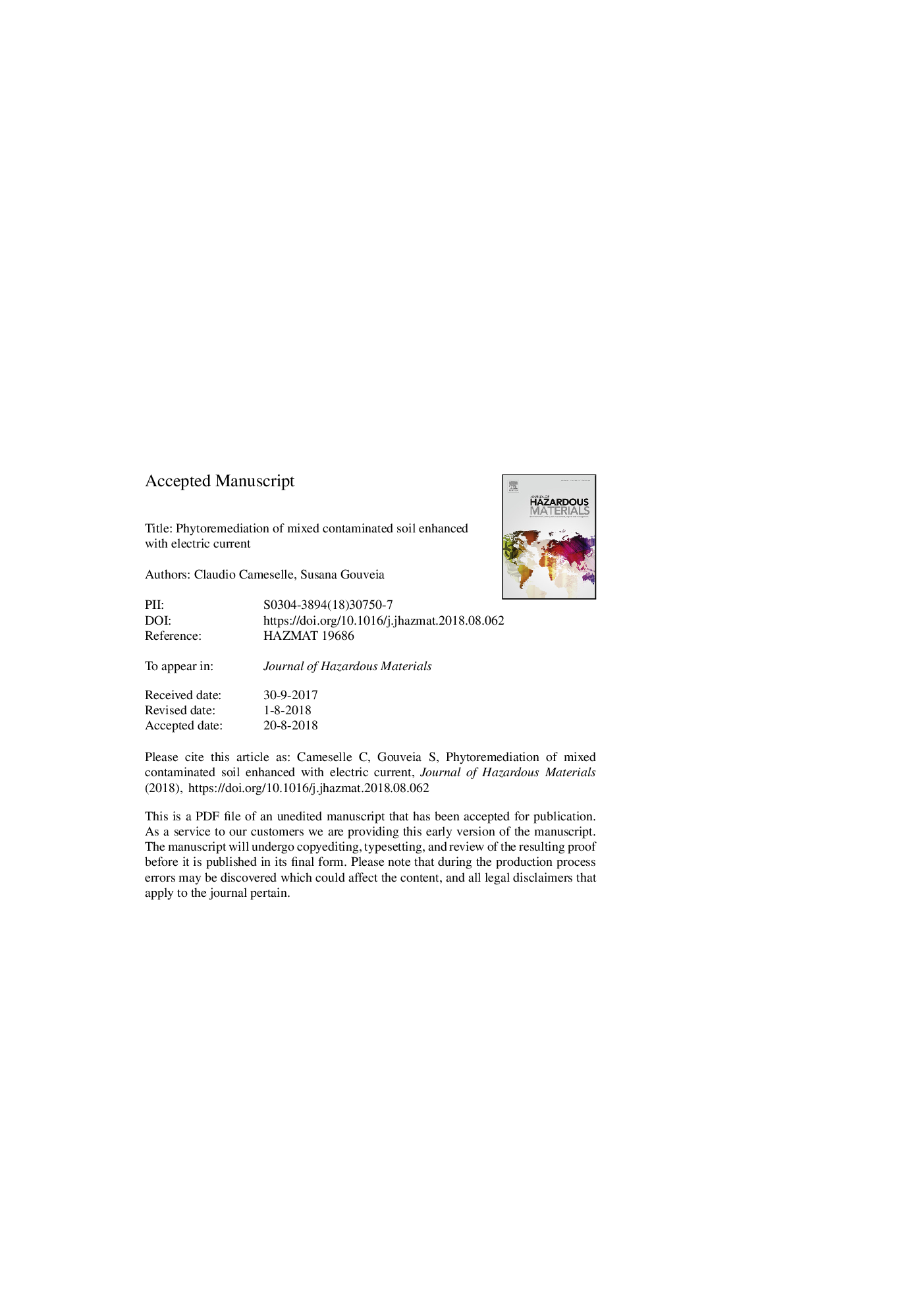| Article ID | Journal | Published Year | Pages | File Type |
|---|---|---|---|---|
| 8953990 | Journal of Hazardous Materials | 2019 | 29 Pages |
Abstract
Brassica rapa is a plant species that can germinate and grow in mixed contaminated soil with PAH and metals (Cr, Pb and Cd). This plant was selected among 14 plant species for electro-phytoremediation tests because its fast germination and growth in contaminated soil. The influence of type of the electric field (AC, DC) and mode of application (continuous, periodic and polarity inversion) was studied in the electro-phytoremediation tests. The application of 1 ACV/cm potential gradient around B. rapa resulted in the effective elimination of anthracene and phenanthrene, but only minor metal removal. The results of this work suggest that alternating current (AC) may be the most suitable electric field for large scale applications. The spatial configuration of electrodes affects the distribution of the electric field in the soil. Various spatial distribution of electrodes have been tested and it has been identified that parallel anodes and cathodes on the soil surface are the most appropriate configuration for field scale applications. Other configurations can be used to concentrate the contaminant around the growing pant or to transport the contaminants from deep soil layers to the rhizosphere.
Related Topics
Physical Sciences and Engineering
Chemical Engineering
Chemical Health and Safety
Authors
Claudio Cameselle, Susana Gouveia,
